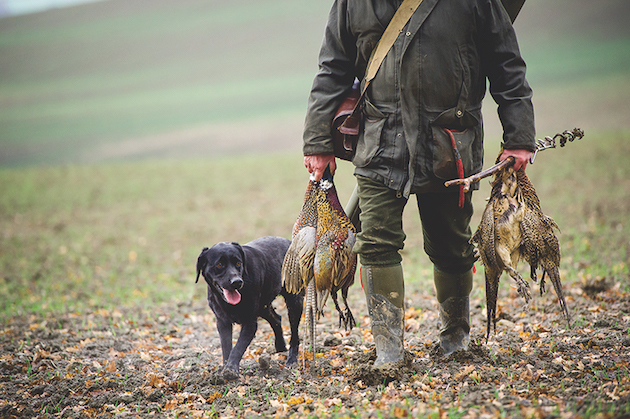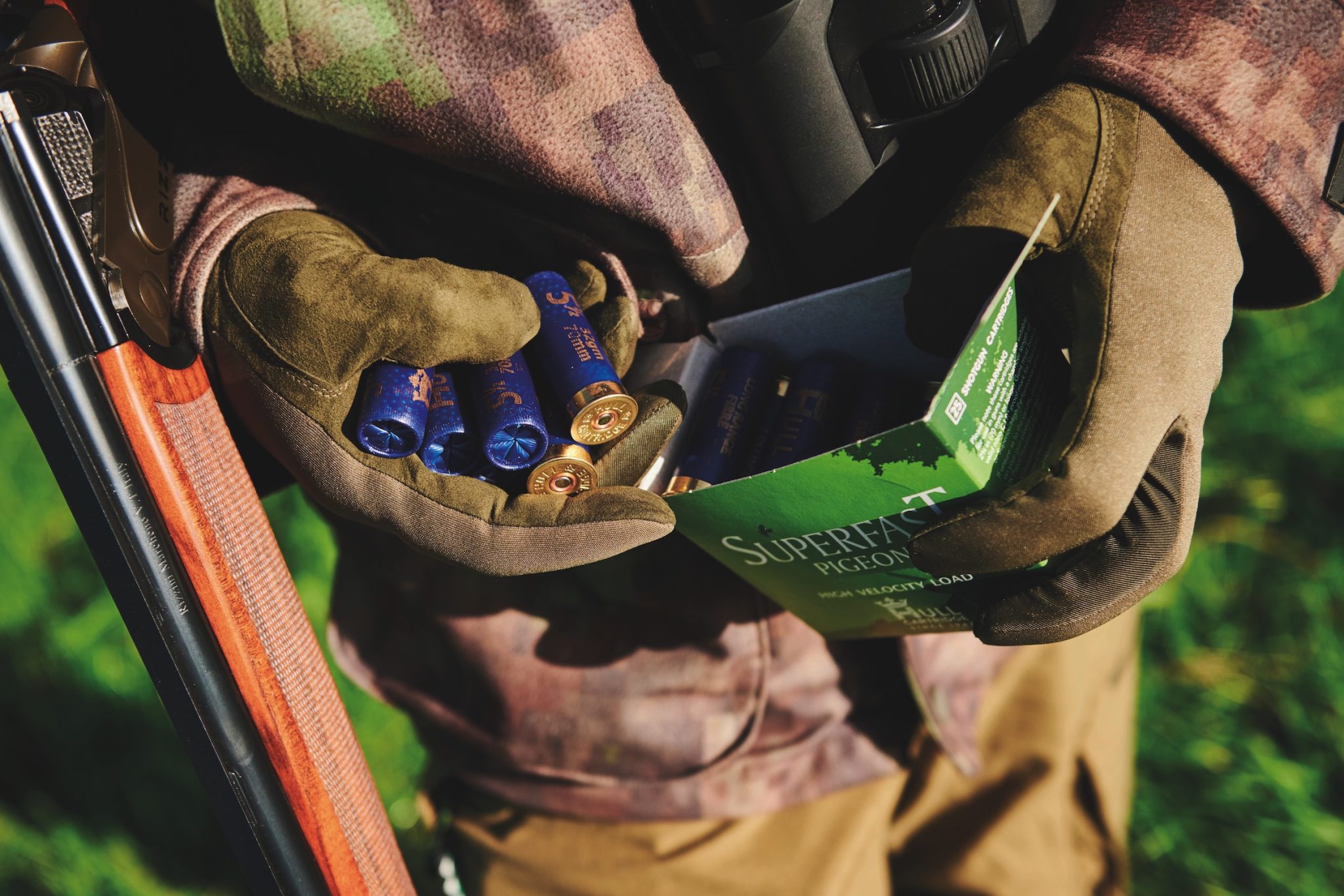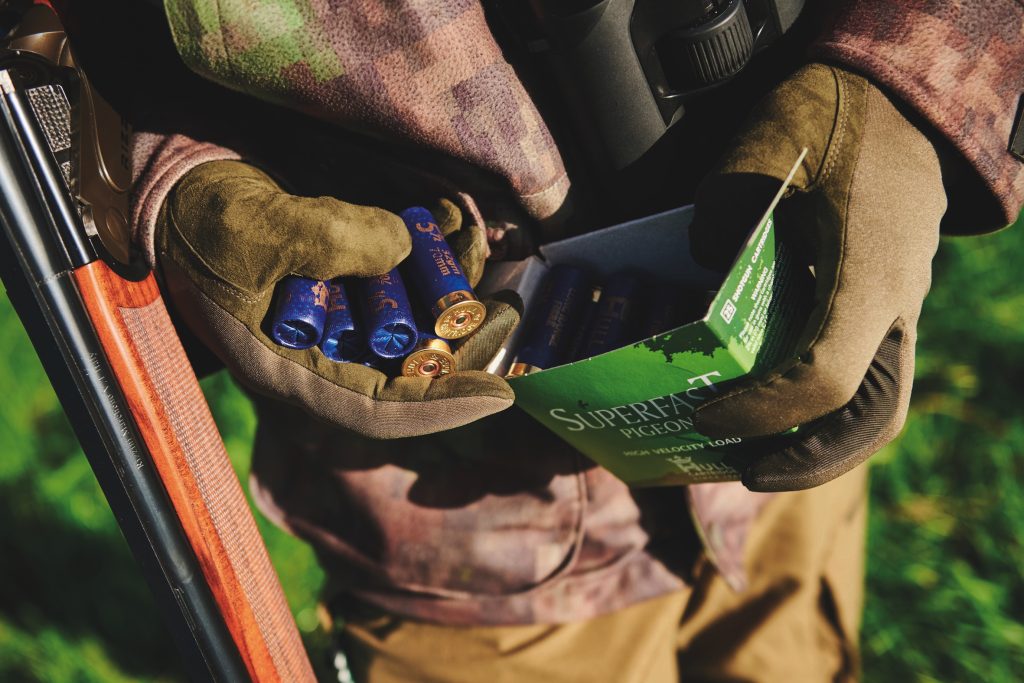Win CENS ProFlex DX5 earplugs worth £1,149 – enter here
What is the right weather for shooting pigeons?
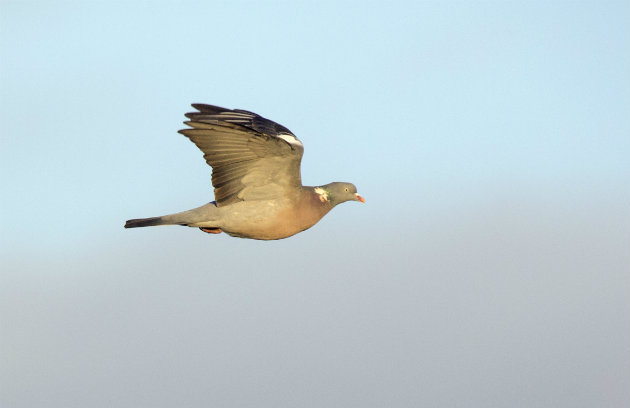
Most articles written about pigeon shooting mention, at some stage in the proceedings, the weather conditions on the day in question. Indeed, I have written many times, how Paul and I wait for the “right” weather, when planning a sortie. So what, in order of preference, are we looking for?
Wind
Wind will determine how pigeons approach your setup and how much the flightline is disrupted by any subsequent shooting. We go to great lengths to avoid firing straight downwind, as the birds’ flightline will invariably be into the wind, and the noise of our shots will carry a long way. This is particularly important in the winter, when rape-feeding pigeons are usually resting up close to the feeding field, and the sound of shooting quickly sends them off to another. To all intents and purposes, the stronger the wind the better, as it also breaks up the big flocks. We spend as much time as necessary pushing resting birds as far from the feeding field as possible, this being achieved far easier when the wind blows.
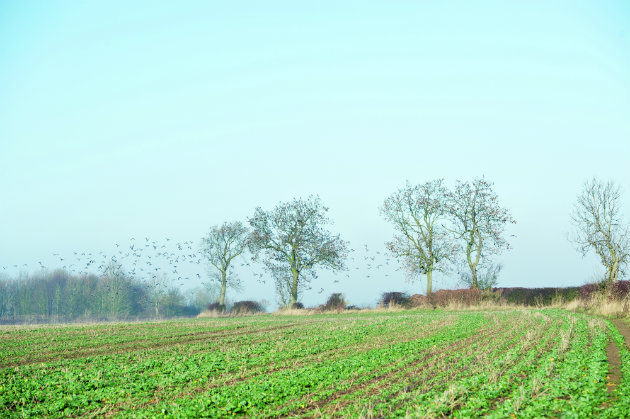
Wind will determine how pigeons approach your setup
Wind strength
Roostshooting is completely dictated by the strength of the wind. I never shoot my little wood in anything less than a gale. The birds arrive in much smaller bunches, at a much reduced height, and are reluctant to go far before attempting to get in again. All my memorable roost shoots have taken place on days when the wind has howled, and pigeons have approached their dormitories skimming the fields trying to find shelter from hedgerows and belts of trees.
Wind direction
Wind direction will also determine where we set up on any given field, so it pays to know what the prevailing wind direction is (generally southwest in this part of the country) and then being aware of a different wind will be beneficial.
I remember sharing a day on peas with the great pigeon fanatic, Will Garfit. A large field of peas had been badly hit all along one side, the flighting birds arriving from behind the hedge line, to sideslip into the prevailing wind to land. It was going to be awkward, to say the least, but with no urgency to tackle the situation, we decided to monitor the weather to see if any change of wind direction was likely. Sure enough, there was a day coming up where the wind picked up and veered north. This had the effect of pushing the flightline into the field from where they turned upwind into the pattern. We set up either side of a prominent oak, shooting 350!
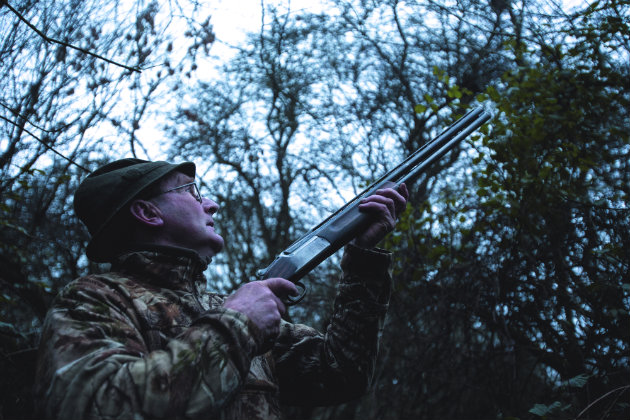
Peter never shoots in his wood in anything less than a gale
Dry and cloudy
Next, we need the weather to be dry, ideally with a bit of cloud cover, so neither you, nor the pigeons are blinded by the sun. Most of the books I have read advocate trying to set up with the sun behind you, the theory being that the birds will not spot you getting up to shoot if the sun is in their eyes. This ignores the fact that if they can’t see you, there is every chance they can’t see the decoys either! For me, the ideal situation is where approaching birds have the sun behind them, meaning the decoys show up like beacons. I generally have no problem organising the hide so that I keep out of the sun, keeping still as pigeons approach, and wearing sunglasses when appropriate.
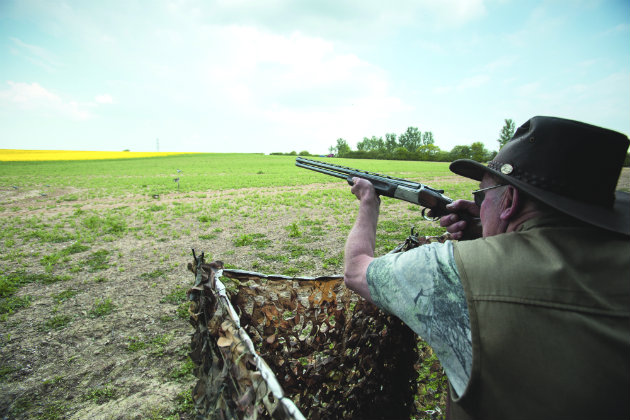
Set up with the sun behind you and wear sunglasses
Less than perfect days
This pretty much covers the ideal conditions we aim for, but what of the days when for one reason or another, we choose to go out in less than perfect weather? Obviously, rain showers can turn up, even on days when none was forecast, but what effect, if any, do they have on pigeon’s feeding habits? I have shot big bags on days when the rain has not stopped, but it is a miserable affair, with everything getting soaked and the birds reluctant to move. There is no doubt in my mind that most species of birds are able to react to a change in the weather, probably due to a drop in air pressure, and adjust their feeding habits accordingly. On days of frequent showers, pigeons will stop coming as soon as the rain starts, seemingly knowing that it will stop shortly, turning on again immediately after it does so.
I used to believe that pigeons would never go to roost on an empty stomach, so even if it poured all day, they would still venture out for a feed. Many fruitless soakings later, I think pigeons are quite happy to go to bed with an empty crop, rather than feed in a downpour.
Snow
I have never killed a big bag of pigeons when snow has covered the fields. This is surprising when you consider that heavy snow will cover all but the most advanced fields of rape, meaning any exposed crops take a fearful hammering. The birds seem to realise that they must conserve energy and simply refuse to fly far unless absolutely forced to. They know to keep in flocks to make sure they locate the best source of food, all the things that make large bags impossible to achieve. Add to this, the fact that pigeons seem unable to spot decoy layouts against the white glare of snow, and you can see why I only turn out when the damage they are causing becomes intolerable. Admittedly, because we tend not to get prolonged periods of snow cover, I have never really experimented with the use of whirly machines, surely that movement would do the trick?
Hot days
Really hot days are probably best avoided if you can. Pigeons will obviously feed on these days, but tend to leave it till much later in the afternoon, when the sting has gone out of the sun. There isn’t much fun getting burned to a frazzle yourself, so make sure you take sensible precautions, sun cream and plenty of fluids being the order of the day. Also don’t be surprised if pigeons don’t start to feed till early evening, I have set up as late as 5 o’clock on really hot days and still killed more than 100.
Fog
The last weather condition to discuss is fog, and my advice to you is simple: don’t bother! Pigeons will not move in fog, and even if they do, will descend en masse to the nearest field to the roost wood. One shot and they will be gone. I suppose if you were really desperate for a few shots, you could walk the birds out of hedgerow trees, as you will never get a better chance of approaching unseen, but I am happy to leave the birds in peace, and wait for the conditions that allow this wonderful sporting bird to show us what it can do.
Related Articles
Get the latest news delivered direct to your door
Subscribe to Shooting Times & Country
Discover the ultimate companion for field sports enthusiasts with Shooting Times & Country Magazine, the UK’s leading weekly publication that has been at the forefront of shooting culture since 1882. Subscribers gain access to expert tips, comprehensive gear reviews, seasonal advice and a vibrant community of like-minded shooters.
Save on shop price when you subscribe with weekly issues featuring in-depth articles on gundog training, exclusive member offers and access to the digital back issue library. A Shooting Times & Country subscription is more than a magazine, don’t just read about the countryside; immerse yourself in its most authoritative and engaging publication.



